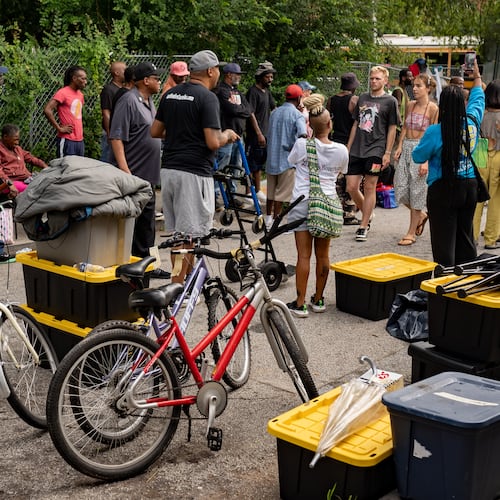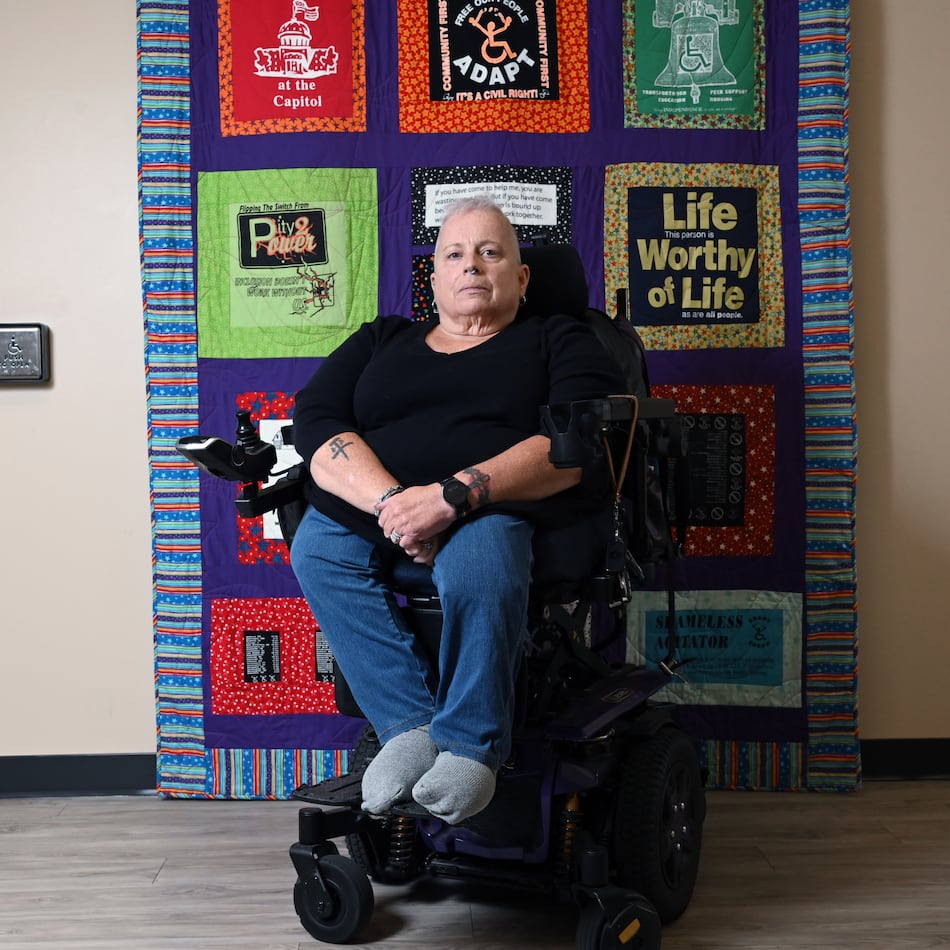Elease Thomas stood in the vestibule of the sanctuary where she worshipped as a child and felt the vibrations.
Though her congregation had long since moved from the building, she never forgot the sounds of the old church. She could still hear the tolling of the bell at her sister’s funeral in the 1930s. She could still feel the joyful strains of the choir and piano, which she started playing here before she was a teenager in the early ’40s.
“Some of the neighbors thought we were making too much noise, ” said the 80-year-old Thomas, shaking her head. “They told us to be quiet.”
“They didn’t like the music, ” her friend Mattie Howard chimed in. “Can you imagine that? There must have been something wrong with them.”
No, it was just the times.
Antioch East Baptist Church was a black congregation in the midst of what had become a white neighborhood, Atlanta’s Candler Park. Feeling increasingly unwelcome, the church moved in 1951, settling on the other side of the tracks in the black neighborhood of Edgewood.
On Saturday, the Baptists returned at the invitation of the mostly white Unitarian-affiliated fellowship that now occupies the stone church on Candler Park Drive. They returned in style, with their drums, their organ and their choir.
The title of the program said it all: “Going Home.”
For two hours, as clouds brewed up a rainstorm outside, Antioch’s massed choir rattled the pressed-tin ceiling inside the sanctuary that older members recalled so well. The children’s choir charmed, the men’s and ladies’ choruses testified, and the step dancers thundered across the stage that once held a baptismal pool. In no time, the Baptists had their hosts tapping their feet and shaking their tambourines.
It was living proof that racial reconciliation doesn’t have to be an awkward pageant of insensitive remarks followed by outrage and public apologies. It can just as easily play out with a heartfelt gesture, linked hands and shared music.
That’s not to say that the homecoming was without cultural dissonance. It would be hard to imagine two more different congregations lifting their voices together.
The visitors came from a traditional black Baptist church with more than 1,000 members, a host of outreach ministries and seven choirs amounting to almost 200 voices.
The hosts, who call their fellowship the First Existentialist Congregation, are a bohemian group of fewer than 100 members whose sanctuary has no pews, pulpit or cross.
The Existentialists have no choir either, although they obviously enjoy music. Their sanctuary has a grand piano and is well-stocked with tambourines and pink, spiral-bound songbooks that include hymns, folk standards and a smattering of popular tunes like John Lennon’s “Imagine” (“Imagine there’s no heaven …”).
“They couldn’t be more different from us if they were Jehovah’s Witnesses, ” said Antioch’s senior pastor, the Rev. John F. Williams, a former teacher who has found himself trying to explain to his flock what “existentialist” means.
The Antioch member who narrated the concert stumbled over the word twice before she got all the syllables right.
“Just call us First E, ” one of the existentialists helpfully suggested.
The Rev. Marsha Mitchiner agreed that her congregation isn’t a typical church. “We have Christians and Buddhists and Jewish people and pagans, ” she said. “We believe that each individual self-identifies a personal path.”
That’s what they mean by existential: a philosophy that emphasizes freedom of choice and individual experience.
None of the doctrinal differences mattered when it came to the homecoming, the pastors concurred.
“This is about our shared history in that building, ” Williams said.
The event actually grew out of a history project. Edith Kelman, a Candler Park artist, started digging into the hidden past of the church and its neighborhood when she became office manager at First Existentialist a few years ago.
She learned that Candler Park had its roots in a predominantly black working-class neighborhood that had been part of the independent city of Edgewood. Antioch started there in 1874 and eventually built a frame church on what is now Oakdale Road. It burned under mysterious circumstances in 1916, during a time when new bungalows were attracting white families and changing the complexion of the area.
“There’s no official record of the circumstances of the fire, ” said Amy Meyer Burns, a lawyer who did some of the pioneering research on the neighborhood as a Georgia State University history student in the 1990s. What she found instead was a strong oral tradition within the church that blamed the incident on racial hatred.
“We’ve always been told that some of the white people burned us out, ” said Kendra Clopton, 20, a member of the Antioch step-dancing troupe.
After the fire, the church bought another piece of property nearby, and its members built a stone sanctuary with their own hands.
“They wanted a church no one could burn down, ” explained Ralph J. Latimore, an Antioch stalwart whose grandfather worked on the project, hauling granite from Stone Mountain by mule and wagon.
Antioch’s stone sanctuary was finished in 1922. That same year, former Coca-Cola magnate Asa G. Candler essentially gave the city of Atlanta 60 acres for development of a park across from the church. Blacks lived on some of the land, which was cleared for Candler Park, making the neighborhood even whiter.
After years of mounting hostility, Antioch finally decided to relocate in 1951. The church took its brass bell, which had tolled for weddings and funerals and other special occasions. It still sits in front of the current Antioch building on Hardee Street, behind the Kroger store in the new Edgewood Shopping District.
On Saturday, more than 100 of the faithful dressed in their Sunday best and gathered in front of the church, holding hands as they sang and prayed. Then Latimore rang the bell, and they boarded buses for the 1-mile ride back across the tracks to their former home. First Existentialist has used the building since 1980.
After the music ended in the late afternoon, Deacon Alonzo Wright, chairman of Antioch’s media ministry, couldn’t stop smiling as he packed his video equipment.
“You know, I used to caddy at that golf course over there, ” he said, referring to Candler Park, “and I never knew this had been our church.”
Now there’s a stone marker out front, placed last week by the Existentialists, telling of the structure’s Baptist birth.
As he walked out, Wright made a point of finding Kelman, the woman whose history project led to all this. He gave her a long hug and suggested they make it an annual event.
“We will come back, ” he promised.
“We want you back, ” she assured him.
About the Author
The Latest
Featured

